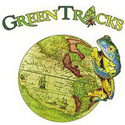Sani Lodge Pt.5 – The Amphibians!
Dendropsophus parviceps was a frog I wanted to get good pictures of. It’s been a few years since I’ve seen one and I don’t have any digital shots of it. My lone specimen was found sitting on an aroid in a swamp. Unfortunately, he wouldn’t cooperate and I didn’t get any decent shots of his brilliant yellow/orange flash marks.
A couple views of Dendropsophus parviceps. Unfortunately, you don’t get a good look at the pretty flashmarks.
Salamanders are also here. Not in great diversity, however with almost all of them being nearly indistinguishable Bolitoglossines. Most of the time you don’t see them out but on some unknown cue you can find several sitting quietly on vegetation on a given night. This trip I found numerous Bolitoglossa ecuatoriana and one B. altamozonica. They only seem to want to move when you are trying to photograph them. They are a challenge because it is hard to make a slender straight line look interesting.
One of the few salamander species in Amazonia. The genus Bolitoglossa is a group of lungless salamanders. Here is B. ecuatoriana.
The dart-poison frogs are a specialty of mine so much of my daytime frog hunting was keyed in on them. These guys are tough because they are generally very shy and shoot into the leaf litter at the slightest disturbance. It is easier to catch them when they are sleeping on low vegetation at night but during the day their constant calls entice you to find them active. Allobates femoralis, A. insperatus, and likely another little brown Allobates reside at Sani. I have not seen A. parvulus here but there is no reason it shouldn’t be. I did catch an A. femoralis for photos but he was not acting well so I left him alone.
One of likely 2 species of rocket frogs at Sani. This is Allobates insperatus.
I heard numerous Ameerega bilinguis calling but was unable to get my hands on any save a lone sleeping individual. I’ve shot these a few times before so tried a few lame experiments.
This dart-poison frog, Ameerega bilinguis, can be heard with its two-tone chirp in open leaf litter habitat. This shot was shot with multiple flashes at 1/60 of a second.







4 comments
Another great post, Tim! Thanks for sharing your experiences and your awesome photos!
Oh, great picture! That’s a cool little frog. I’ve always wanted to go to South America and look for dart frogs. Just to see them in their natural environment!
Great looking trip. I want to field herp in south America sometime. Wish I had somebody who loved them as much as me to go with!
The dart frog community is pretty close-knit. Dive in and you’ll find someone to take a trip with you. I’ve been fortunate to see lots of dendrobatid species in the wild (from several countries); many of them exceedingly rare. You do have to put in the work to pull it off but the rewards are worth it. I’ll have to write a dendrobatid hunting article some day.